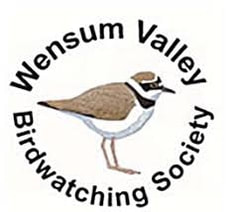|
Leader: Nick Edwards Reporter: David Laurie Photographs: Nick Edwards Bird List: Alan Hughes Firstly, a big thank you to Amy, our Pensthorpe guide who met 16 of us at 5:00am for our Dawn Chorus outing. It was a chilly, misty start (5°C) but with plenty of birds singing including Blackcap, Wren, Song Thrush and cawing Rooks. In the park, were there Cattle or Little Egrets in the mist at Moon Water? Consensus was there were both. We found Little Egrets later but the Cattle Egrets had gone elsewhere, presumably in search of their favourite cattle. Passing Old Squaw Lake we found the first Reed Warbler and a pair of Common Terns as well as Mallard and Tufted Duck and a Great Crested Grebe. Heading on into the woodland there was a Treecreeper, Chiffchaffs and a Great Spotted Woodpecker. The woodland had a fine display of Bluebells, while the meadows had plenty of Cuckoo Flowers (aka Lady's Smock) and although the accompanying bird was clearly heard it was not seen. Likewise for several Cetti's Warblers.
By 7:00 it was warming nicely with a clear sky and a light north-east wind as we made a detour to see a box with nesting Tawny Owls, though none of the youngsters were showing. On the way a Garden Warbler was singing invisibly in a Hawthorn (well into blossom, as befits its alternative name of Mayflower), giving us a good opportunity to compare its longer, smoother song with the Blackcap's shorter, more jittery vocals. At the Wader Scrape there was an elegant Greenshank, Avocets, Lapwings and a Common Sandpiper plus a very distant plover - Ringed or Little Ringed? We were unsure, but the latter is more likely. There were a lot of Black-headed Gulls nesting and squabbling in their usual way but there was no sign of any Mediterranean Gulls, though they have been seen recently. Next was the path by the river which gave us a good comparison of Sedge and Reed Warbler songs as well as an excellent view of a singing Willow Warbler. We then walked round to the Wetland Hide where there were Longhorn cattle (but no Cattle Egrets) and a good range of birds including assorted ducks and Lapwing. There was also a Lapwing chick, a welcome sign of breeding success. A Kingfisher was perched in the reeds on the far side while two Cormorants sat in the trees opposite. Elsewhere, Barnacle and Greylag geese had goslings and there were several young Coots, so they had bred successfully too. Curiously, almost all the Barnacle Geese we saw had no rings. The only one I could find was K46 with a white ring on the other leg showing it was ringed at Holkham Hall. Where are the ones ringed at Pensthorpe? The final leg was along the path in front of the Farmland hide. There were Swallows over the field, a Green Woodpecker flew past and the hedges gave us a Whitethroat and its short, scratchy song. By now it was around 9:00 and a chirping House Sparrow in the cafe courtyard brought our list for the day to 69 species seen and/or heard. Our thanks to Nick for organizing a very enjoyable morning which ended with the luxury of a much-appreciated cooked breakfast. Species List:- Avocet Barnacle Goose Black-headed Gull Blackbird Blackcap Blue Tit Canada Goose Cattle Egret Cetti’s Warbler Chaffinch Chiffchaff Collared Dove Common Buzzard Common Gull Common Sandpiper Common Tern Common Whitethroat Coot Cormorant Cuckoo Dunnock Egyptian Goose Gadwall Garden Warbler Goldfinch Great Crested Grebe Great Spotted Woodpecker Great Tit Green Woodpecker Greenfinch Greenshank Grey Heron Greylag Goose Herring Gull House Martin House Sparrow Jackdaw Kingfisher Lapwing Little Egret Long-tailed Tit Mallard Marsh Harrier Moorhen Mute Swan Oystercatcher Pheasant Pintail Pochard Red-legged Partridge Reed Bunting Reed Warbler Robin Rook Sedge Warbler Shelduck Shoveler Skylark Song Thrush Starling Stock Dove Swallow Teal Treecreeper Tufted Duck Willow Warbler Woodpigeon Wren Yellowhammer Hare Muntjac Roe Deer
0 Comments
Leave a Reply. |
Please feel free to read through our reports from our monthly outdoor meetings. Archives
May 2024
Categories |

 RSS Feed
RSS Feed
